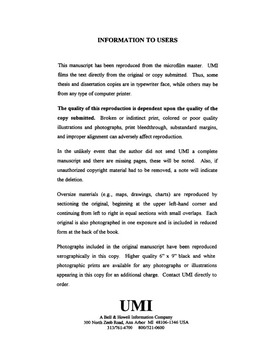| dc.contributor.advisor | Nussbaum, Jon F., | en_US |
| dc.contributor.author | Eubank, Penny S. | en_US |
| dc.date.accessioned | 2013-08-16T12:30:21Z | |
| dc.date.available | 2013-08-16T12:30:21Z | |
| dc.date.issued | 1998 | en_US |
| dc.identifier.uri | https://hdl.handle.net/11244/5727 | |
| dc.description.abstract | Results of the content analysis validated the typology of five functions and showed that "proof by example" stories were told most frequently. A chi-square test revealed a significant relationship between membership status and the use of storytelling functions (chi2 = 26.784, d.f. = 4, p < .001). The comparison of mean scores on the Organizational Commitment Questionnaire revealed no significant difference between the two groups (p = .107). No significant association was demonstrated between commitment scores and number of shared stories told (r = -0.14; p = .898). A qualitative analysis of participants' narratives shows prevalent use of MCDs to express identity with in-groups and relationships to out-groups. The degree of organizational identification expressed is noticeable in both groups' narratives. A significant relationship was found between membership status and the use of in-group and out-group organizational references (chi2 = 31.599, d.f. = 5, p < .001). | en_US |
| dc.description.abstract | The research described in the dissertation uses this approach to analyze organizational commitment and group identification in three independent living retirement centers. The research was conducted to assess the typology of storytelling functions and determine if residents and employees used the functions differently. The researcher also investigated differences in the two groups' levels of organizational commitment and examined a possible association between commitment and the telling of shared organizational stories. The final aims of the research were to analyze qualitatively the expression of social identity in participants' narratives and to find out if residents and employees differ in their group references. | en_US |
| dc.description.abstract | The purpose of this dissertation is to examine the functions of organizational storytelling and the expression of social identity in retirement centers. A review of literature reveals five functions of organizational storytelling: value expression, proof by example, sensemaking, system maintenance, and social prescription. The review also describes two predominant approaches to storytelling research: a macro-level approach that focuses more on the organization and a micro-level approach that emphasizes the storytelling. The dissertation articulates an integrative approach that provides connections between stories, storytellers, and organizations. | en_US |
| dc.description.abstract | Participants were 43 residents and 46 employees of three retirement centers recruited in a convenience sample. Participants completed the Organizational Commitment Questionnaire (Mowday, Steers, & Porter, 1979) and took part in a group interview. The interviews yielded 371 organizational stories, which were submitted to a content analysis procedure. Three independent coders classified the stories according to function, whether the stories were personal or shared, and the use of membership categorization devices, or MCDs (Sacks, 1992). | en_US |
| dc.format.extent | x, 148 leaves ; | en_US |
| dc.subject | Nursing homes Sociological aspects. | en_US |
| dc.subject | Storytelling Social aspects. | en_US |
| dc.subject | Speech Communication. | en_US |
| dc.subject | Storytelling. | en_US |
| dc.subject | Gerontology. | en_US |
| dc.title | An integrative approach to stories and storytelling: The expression of organizational commitment and social identity in retirement centers. | en_US |
| dc.type | Thesis | en_US |
| dc.thesis.degree | Ph.D. | en_US |
| dc.thesis.degreeDiscipline | Department of Communication | en_US |
| dc.note | Source: Dissertation Abstracts International, Volume: 59-11, Section: A, page: 4010. | en_US |
| dc.note | Adviser: Jon F. Nussbaum. | en_US |
| ou.identifier | (UMI)AAI9911860 | en_US |
| ou.group | College of Arts and Sciences::Department of Communication | |
